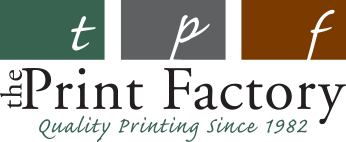
If you’re coming to a custom print shop for your printing job, you want it to stand out. Any office supply store can make copies, a print shop can make something special. When you need printing in NH and you’re looking for that something extra, how about in-house thermography from The Print Factory?
If you have been looking into custom printing you’ve probably come across the term thermography. But what does it mean? Also called thermographic printing, raised ink printing, or offset thermography, thermography is a cost-effective way to achieve a raised printing effect.
Here’s a brief history of the technique and how it works.
The Origins of Thermography
Before thermography was developed, raised printing was done by engraving. Engraving involves cutting grooves into metal plates that are packed with ink, which is then transferred to the paper. This process is expensive because new plates have to be cut for every print job. Printers needed a way to achieve the same raised effect using ink and the printing press. Enter thermography.
The Thermographic Printing Process
First, let’s talk about what you need for thermographic printing. Other than paper, a printer needs three elements for thermography: ink, powder, and heat. Using those elements, here is what that process looks like:
- The printers print the text or image in slow-drying ink.
- They apply thermographic powder to the ink. The powder sticks to the ink and the excess powder is removed from the paper.
- The printers expose the ink and powder to high heat for a few seconds. The heat causes the powder to melt. When it cools, the powder takes on the shiny, rounded appearance that makes the printing stand out and catch the eye.
The thermographic powder is usually colorless, so the color of the ink comes through. For gold and silver effects, printers use different powders with a specific color ink underneath.
Printing NH: Thermography and Your Print Job
At The Print Factory, we offer in-house thermography. Thermography is a simple and affordable way to add an extra layer of professionalism to the look of your print job. Thermographic printing on business cards or letterhead makes your company name or logo stand out and catch the eye. Other common uses for thermography are invitations, announcements, and stationery.
